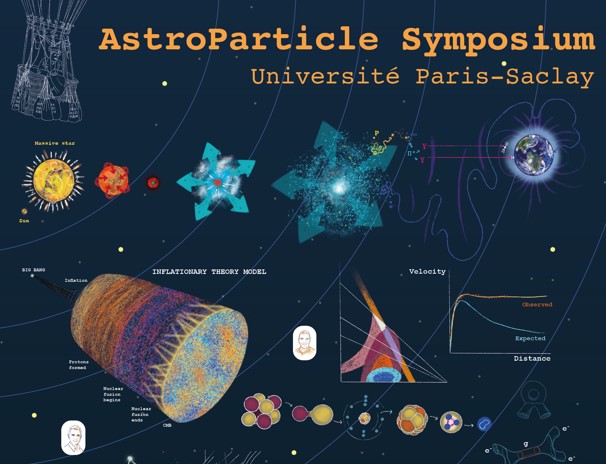AstroParticle Symposium 2022
Institut Pascal
A specialist meeting in Astroparticle Physics that will take place at the Pascal Institute of the Paris-Saclay University for a 4 week program.

The format will be flexible enough to allow for strong interactions between participants. There will be working sessions every day with dedicated office space for participants a « conference » format day per week with invited speakers.
Under the sponsorship of P2IO, P2I, IN2P3 master project, APPEC, CEA, IAS and OSUPS
Public events
Some public events are organized during the symposium, comprising colloquia for scientists and general public conferences aimed at a wider audience.
Practical information on how to come to Institut Pascal can be found on this page.
Schedule of topics that will be covered
Week 1: Dark Matter, Experiments Meet Theories
- Particle physics scenarios and alternatives
- Confrontation with experimental results
- Link with observations and models of the early Universe
Week 2: Early and Late Universe Cosmology
- Latest observations and theoretical advances
- Exotic phenomena and new probes
- Future observatories and new approaches
Week 3: Transient Multi-Messenger Phenomena
- Gravitational waves: Outlook for O4 and beyond
- Current and future missions for transient astrophysics
- GRBs: classifications and MWL/MM signatures
- New phenomena and breakthroughs: VHE novae and GRBs, FRBs, magnetars, ...
Week 4: High and Ultra-High Energy Cosmic-Rays
- Modeling of acceleration and propagation
- Predicted vs observed anisotropies
- Open data and software
